
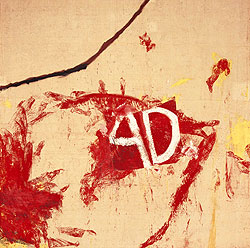 An American artist and film maker has won Golden Globe, BAFTA, Cesar Award & Golden Plam. He is specially known for his plate painting – large-scale paintings set on broken ceramic plates.
An American artist and film maker has won Golden Globe, BAFTA, Cesar Award & Golden Plam. He is specially known for his plate painting – large-scale paintings set on broken ceramic plates.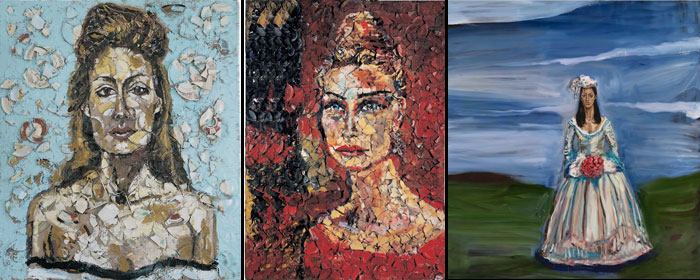

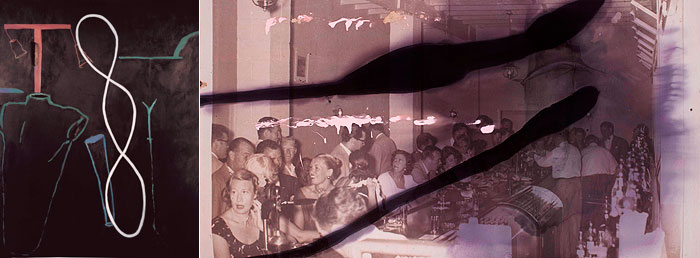

 An American artist and film maker has won Golden Globe, BAFTA, Cesar Award & Golden Plam. He is specially known for his plate painting – large-scale paintings set on broken ceramic plates.
An American artist and film maker has won Golden Globe, BAFTA, Cesar Award & Golden Plam. He is specially known for his plate painting – large-scale paintings set on broken ceramic plates.



 “The most resistant element is neither cement, nor wood, nor stone, nor steel, nor glass. The most resistant material in construction is art.” Gio Ponti
“The most resistant element is neither cement, nor wood, nor stone, nor steel, nor glass. The most resistant material in construction is art.” Gio Ponti



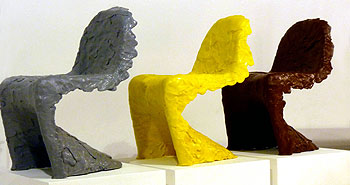 In the month of June in Milan arrived a new edition of White. It leaves behind the name White Homme and becomes White Giugno, thus varying a modern format: together with menswear, women’s collections will be launched in a young and creative context that also includes art and design, and a calendar of very important culture in-house and ‘fuorisalone’ events created in collaboration with the Municipality of Milan.
In the month of June in Milan arrived a new edition of White. It leaves behind the name White Homme and becomes White Giugno, thus varying a modern format: together with menswear, women’s collections will be launched in a young and creative context that also includes art and design, and a calendar of very important culture in-house and ‘fuorisalone’ events created in collaboration with the Municipality of Milan.
The format of White Giugno, with its women’s innovations, selected an exceptional author for an installation in a prestigious location. Antonio Marras, in the night of Saturday, in the Bramante Cloister and Sacristy, will be the protagonist of an inaugural event that combines fashion and art.

The second event that opens White to the town is with Massimo Alba: in the night of Monday, he will disclose men’s and women’s collections among the flowerbeds of the Botanical Garden, the green lung of the Brera quarter, in an evocative setting characterized by musical lights and shades, and intense scents of sweet herbs.
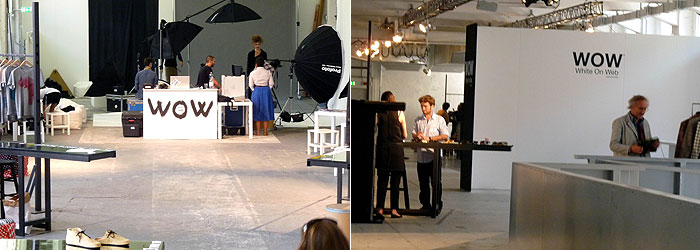
Tradition, Value, Beauty, the exhibition dedicated to the craftsmanship excellence of Made in Italy will give hospitality to Marsell, the research shoe-manufacturing brand, protagonist of an installation called Avant tradition. And to celebrate the first edition of White Giugno, Marsell created two shoe models, one for men and the other for women, which will be exclusively on sale during the show in Milan.

White Giugno, between fashion and culture, inside and outside of the exhibition, in a dimension that exceeds the standards of the show without further explanation. Indeed, the event is enriched with new contents projected in an innovatory layout, similar to the picture of a modern department store, by enlarging the skyline of its projects to include design and art.

Posted by : Amal Kiran Jana from Milan at 13:25 PM

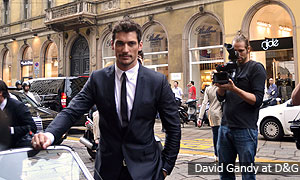 There was an emotional and visual change in the city of Milan in this month of June during this men’s fashion week. Suddenly the streets got metropolitan and super urban and fashionable. You feel there is a new enigma in the city.
There was an emotional and visual change in the city of Milan in this month of June during this men’s fashion week. Suddenly the streets got metropolitan and super urban and fashionable. You feel there is a new enigma in the city.
This season of spring summer 2012 added some new mystery all around the city. There was David Gandy the famous English super model, who is the front face for Dolce and Gabbana. The 2009 forbes magazine ranked Gandy as the world’s third most successful male model, behind Matt Gordon and Sean O’Pry. He was there in the Dolce and Gabbana presentation with his vintage Triumph car, he signed off T-shirts and perfume store glasses. It was a magnificent occasion of fan driving crazy.
In the Missoni show I captured Anna Della Russo the Editor of Vogue Japan. She spent 18 years at Condé Nast Italia as Fashion Editor at Vogue Italia and serving as Editor of L’Uomo Vogue from 2000-2006. She is one of the most fashionable lady in the current time.
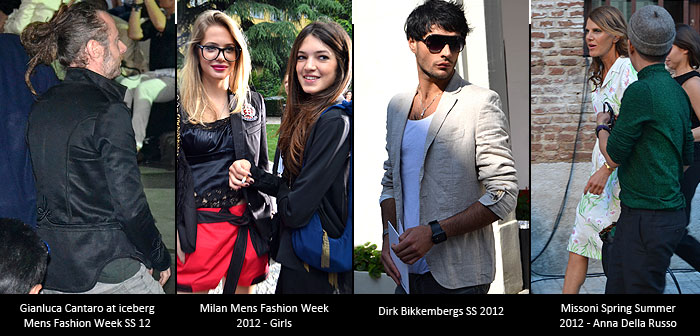
Gianluca Cantaro was there in almost every show and why not … being the editor of L’Uomo Vogue Italia. He is capturing all the news and forecast of the upcoming season of Spring Summer 2012. He believes in capturing even in the minute change and happening in the men’s world. Hope he can capture the best in the men’s world. Later, I discovered Jesse Williams the super model from Grey’s Anatomy in the front row of Roberto Cavalli. He was in an amusing mood with a glass of white wine.
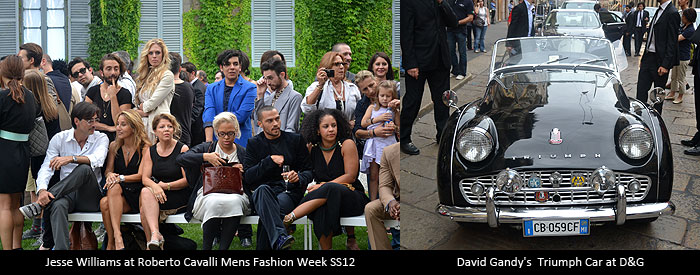
Never the less there was many other famous and distinctive appearance in this fashion week. And now we can conclude from here, wait and watch what happens in the women’s fashion week.
Posted by : Amal Kiran Jana from Milan at 11:12 PM

The ‘Pietro Bertolini’ International Footwear Museum in Vigevano is the first public institution in Italy to be entirely dedicated to the history and evolution of the shoe. Housed in the charming setting of Castello Storzesco, the Museum’s mission is to take the narrative and, through it, trace Vigevano’s history and economy as well as the international development of the shoe, viewed in terms of its value as an object of design and fashion.
Vigevano’s shoe-making tradition is an ancient one, testified by a local Statute dating back to 1392. Vigevano was home to the first ever industrial shoe factory(1866), the first Italian footwear machinery manufacturer(1901) and produced the earliest rubber-sole tennis shoes in the 1920’s.

Renowned the world over, footwear capital dates back to the 1950s/1960s, a period that saw over 21 million pairs produced each year – most of them destined for export. It was right around this golden era that the Museum – commissioned by the historian Luigi Barni and dedicated to its first promoter, the entrepreneur Pietro Bertolini – was created.
As it exists today, the Museum has been reorganized to reveal a more modern and dynamic expression and allows for multiple layers of interpretation. Boasting over 2000 pieces, the Museum currently exhibits around 400 of these, spread over its four rooms and one gallery.

A chronological journey of highly-valuable historical and rare pieces, such as the 1495 slipper that once belonged to Beatrice d’Este. From the romantic, Venetian style late 18th century satin shoes to the wonderful creations of the 1920s with their noble metal details and jeweled heels, right up to the ‘self sufficient’ models produced during the war – shabby in appearance but utter genius in their incorporation of the only materials available at the time. The history selection continues with a tribute to the shoes of the 50s and 60s, personified by the first ever stiletto heel, produced right here in Vigevano. And so we come to the 1970s,a decade that is best summed up by the wedge and the plateau, made from multicolored materials and incorporating patchwork designs. There are also shoes that once belonged to famous people such as past popes, Mussolini and Queen Maria Jose of Savoy on display.

Eye catching selection celebrates the world’s best-loved fashion designers in the field of Italian footwear; those who through their personal taste and fantastic perceptivity have succeeded in creating a product and making it very much their own: creative, unique and unmistakable.
These are: Manolo Blahnik, Louboutin, Jimmy Choo, Dior, Gucci, Armani, YSL, Ferragamo, Roger Vivier, Pucci, Armando Pollini, Marc Jacobs, Karl Lagerfeld and Hubert de Givenchy.
Posted by : Amal Kiran Jana from Milan at 01:45 AM

The new form of womanhood has changed radically if compared since few decades. They have recreated themselves aesthetically and culturally. I see in them a new magnetism like a shiny thunder struck in the dark velvety sky. Surprisingly, they are still able to maintain the balance between seduction and authority. This is the modern divinity of female seduction one get to feel in the flashy high-end fashion streets of Milan. May it be the classy Corso Vittorio Emanuelle II or vibrant Via Montenapoleone. It also can be Corso Buenos Aires-the longest shopping street in Europe. But the divinity fact of these charismatic women remain the same through out.
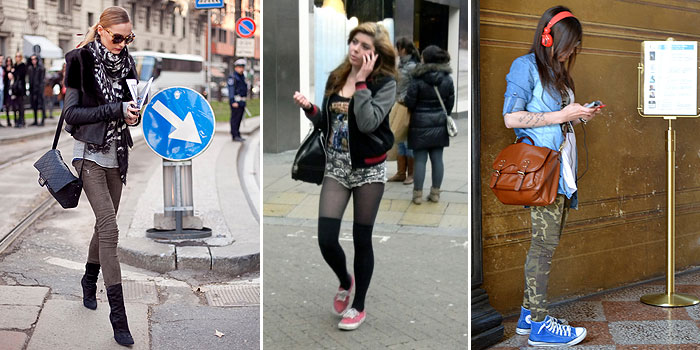
There is already an immense transformation to the playful era of womanhood; where they were no less than an entertaining entity to male or a factual theory of motherhood. Dating back to the industrial revolution where they first step out of the home to make a financial contribution to the family and be a helping hand to the man. And now they have towed man out to give every possible challenge and competition. This may not be done deliberately but certainly modern women have acquired the manifest ability of supremacy. The modern women work in the knowledge of their own abilities, they are sensible and carry moral behavior, sustaining new aesthetics moments, at the same time launching themes related to work and family management, as well as thoughts and actions that, carefully maintaining every aspect of daily life, from the home to work and create idea related to society as a whole.

Eventually, we see that these modern women have a very distinct move towards their life and fashion. Their approach is very bold, they are very self centered and independent, they are creative hence critical. But have this evolution of modern women somewhere gave birth to a new generation of man?
Posted by : Amal Kiran Jana from Milan at 12:33 AM

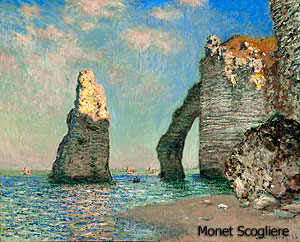 Recently, there is a lot of speculation about the ‘Doomsday’. If the world is ending or not – is still an outlook, so we have to wait and watch. But how we have evolved from our past is remarkable. I always have this paradoxical feeling between life with and without modern technology, we are in the generation of advanced technology and life seems impossible without it. But art was at its peak even without high-technology or lightning electricity. I am speaking about the ‘Impressionist Period’. Impressionist painting remains the most attractive period in the history of modern art and the most appreciated by the public.
Recently, there is a lot of speculation about the ‘Doomsday’. If the world is ending or not – is still an outlook, so we have to wait and watch. But how we have evolved from our past is remarkable. I always have this paradoxical feeling between life with and without modern technology, we are in the generation of advanced technology and life seems impossible without it. But art was at its peak even without high-technology or lightning electricity. I am speaking about the ‘Impressionist Period’. Impressionist painting remains the most attractive period in the history of modern art and the most appreciated by the public.
At the ‘Palazzo Reale’ Milano there is a display of French Impressionist Art from the collection of Robert Sterling Clark who was the grandson of a founding partner of the singer sewing machine company. He grew up in a wealthy New York family with parents who were themselves art collectors and patrons. Clark began seriously acquiring art in 1912, when he was thirty-five years old. As a collector Clark was a maverick, disregarding the fashions of the art world and describing art historians as ‘lacking entirely an eye that appreciates what is good.’

He is best known for collecting Impressionist Art from the 19th century, but he also showed interest in the Renaissance paintings. Clark was self-trained connoisseur, learning through reading, visiting galleries, attending auctions and developing relationships with art dealers-most notably the Durand-Ruel family. Interestingly he also relied deeply on the opinion of his wife Francine. He once described her as ‘an excellent judge, much better than himself at times’ also referring her as ‘touch stone in judging pictures.’
A mere six months after the opening of the Institute in 1955, Sterling Clark died, having amassed over three hundred paintings, many of which are considered masterpieces. And speaking about these great French paintings in the second half of the 19th century represent a crossroads in the history of art. This was a period of change and experimentation, even revolution, in society and politics as well as in the arts. For many painters, the tradition of the grand manner inherited from the Old masters and sanctioned by the Academie des Beaux Arts and its official Salon exhibitions, remained the highest calling for art. Others rejected the techniques and subjects of past art and sought to define a new painting based in nature and dedicated to representing the rich variations of the modern world.

The most significant of these avant-garde artists were soon known as the Impressionists, who often painted en plein air to capture the fleeting effects of light and shadow. Unlike academic painters the impressionists wanted to paint modern subjects in a unique manner to be distinguished. Frequently rejected by the academicians and the Salon juries, they decided to work together and started organizing independent exhibitions. This was a vast factor that changed the whole modern art era. These exhibitions presented extraordinary master pieces, decorative and evocative paintings of the fin-de-siècle.
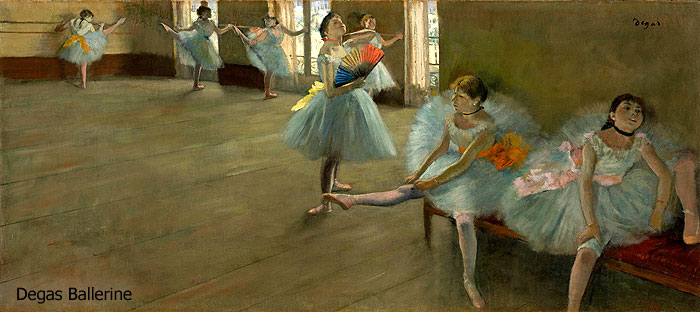
The core of the Clark collection however remains a large group of paintings by the most eminent artist of the Impressionist Period. Like Edouard Manet, Claude Monet, Camille Pissarro, Alfred Sisley, Edgar Degas, Berthe Morisot and Pierre-Auguste Renoir. Their collections were from every Impressionist category landscape, portraits, nudes and still life pictures. But Renoir remained the favorite for them and they eventually acquired thirty nine of his paintings.
Posted by : Amal Kiran Jana from Milan at 10:19AM

Milan is a place of richness during the Design week, with various exhibition, installation and events. The city becomes lively, artistic and poetic.
While taking a stroll down the streets of Via S. Andrea I came across the Fendi store. It was very crowded like the others but still something made it look very distinguished. By stepping closer I realized that the shop was turned into an atelier. It was a live display of craftsmanship – ‘fato a mano’

Also, London designer Rowan Mersh graduated from the Royal College of Art, creates an interactive installation that sublimates the relationship between Art and Craftsmanship. Real-time heart rate data collected from the artisan is fed into an adapted riveting machine, which punches the heart rate onto thin stripes of leather, which are then reborn in the form of a sculpture, symbol of the interaction between Designer and Craftsman.
This provided an opportunity to look beyond the glass and understand the true value of luxury.

Posted by : Amal Kiran Jana from Milan at 12:21 AM


